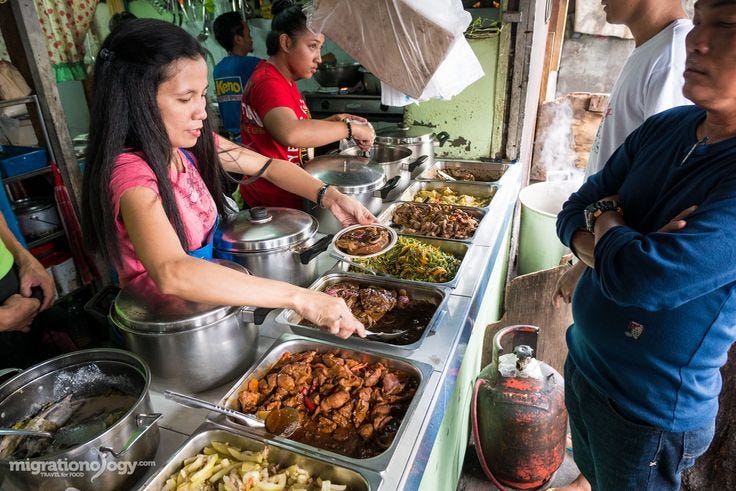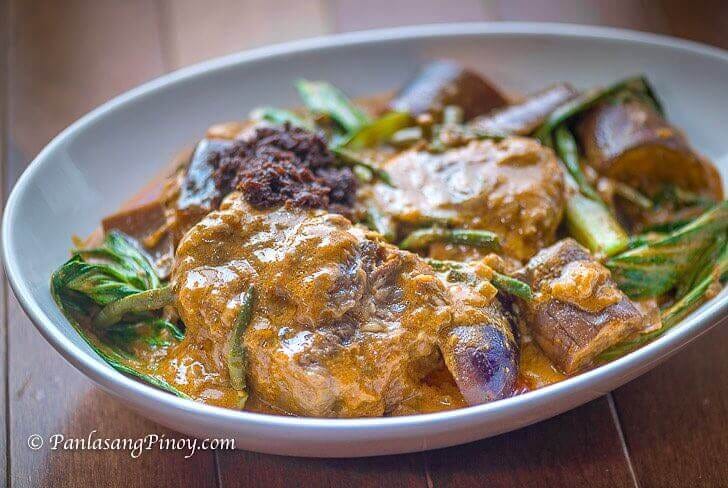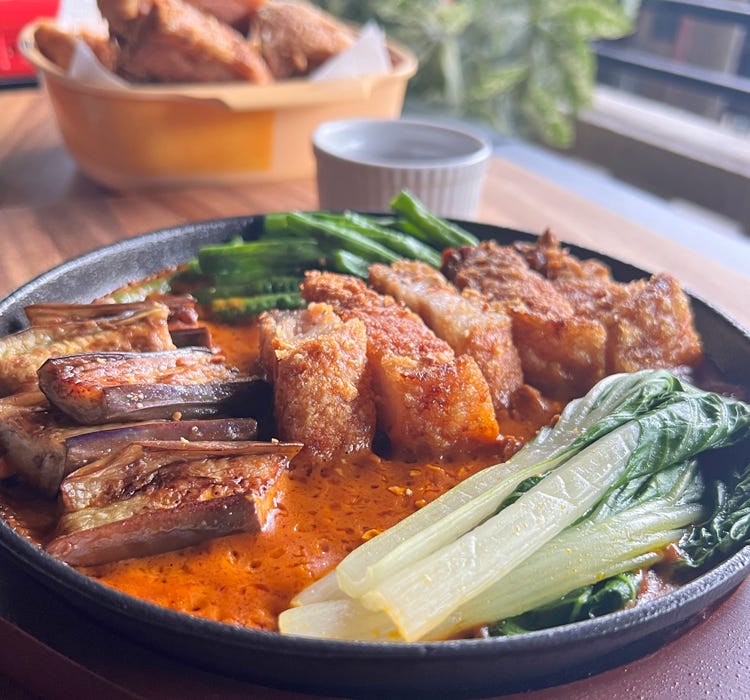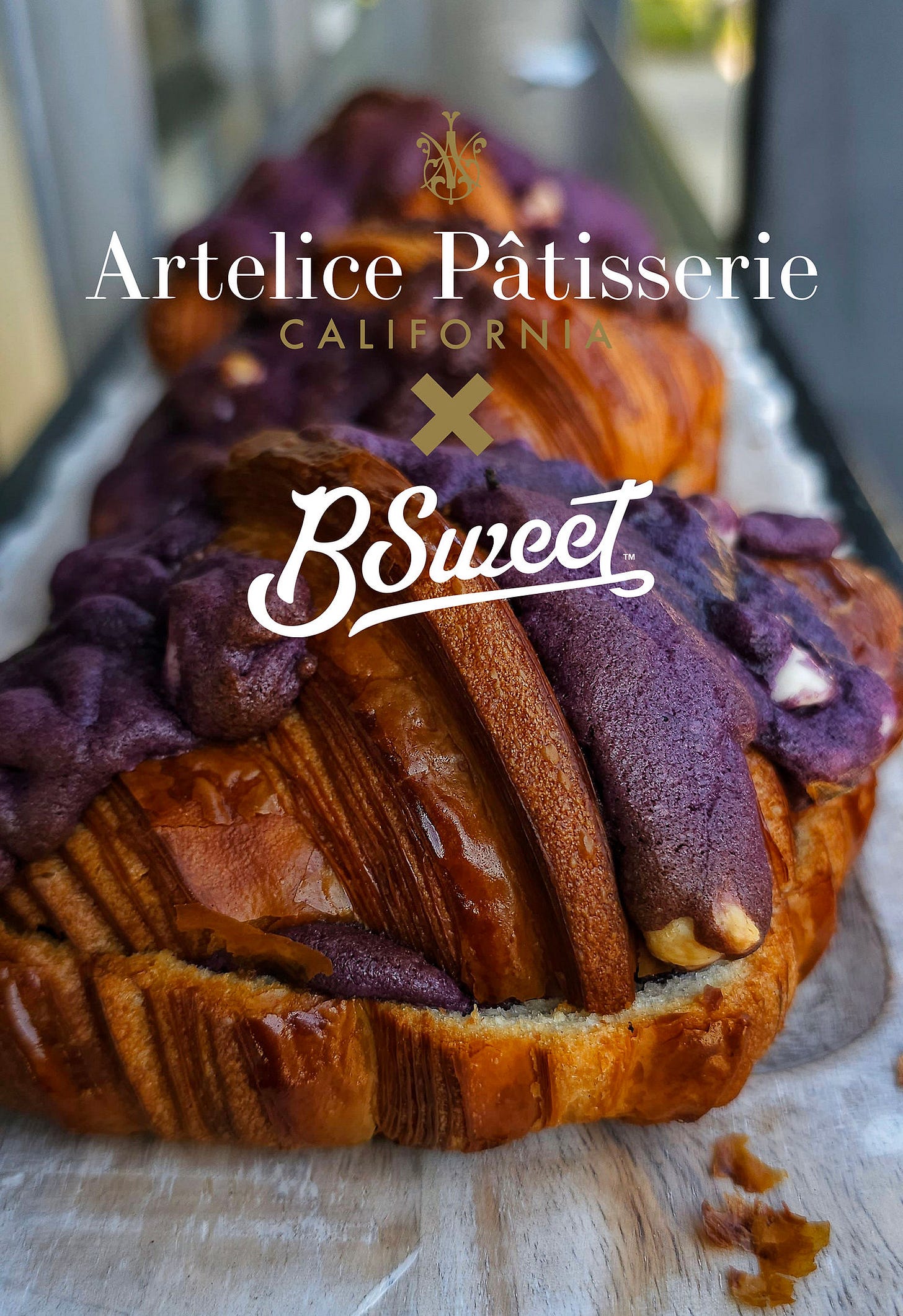Japanese bakeries have become a staple of Southern California cuisine, and San Diego is no exception. On Christmas Eve, my family and I were able to catch the last of ASA Bakery’s katsu curry before they closed early for the holidays. Japanese katsu curry has become one of my favorite dishes over the years, and if it’s on the menu, I will be ordering it. From Maragume Udon on Sawtelle to Cream Pan in Tustin, katsu curry will always be a filling, delicious, good-for-the-next-day order.
The first bite of katsu curry always makes me grateful for the rich and vibrant diversity of Southern California. I don’t just mean that just because I get to eat food from many different cultures without ever having to leave. It’s because SoCal wouldn’t exist if it weren’t for its immigrant enclaves and their tales of success.
Trailing off in the car, hypnotized by the deliciousness of the warm dish on a chilly winter evening, I wondered about the dish’s origin. Curry is often associated with Indian cuisine in the West. I looked up the dish online to learn more about potential cross-cultural exchanges between Japan and India.
A quick Google search gave me the Romanized version of its Japanese translation - katsukarē. I fixated on the last part of the word, karē, thinking about its potential relation to the Filipino peanut-based oxtail stew, kare-kare. I asked my parents who were sitting in the front seat if the two dishes might have any connection, noting the use of similar ingredients and the shared word. They immediately denied it.
Despite my parents’ authority on all things Filipino, I refused to believe them on this one. My immediate connection was that Japan had invaded the Philippines in the 1940s and occupied the country for nearly three years. Thus the connection between the two dishes wasn’t improbable. The Spanish occupation of the Philippines (albeit way longer than Japan’s) had a profound influence on our language and culture, including various dishes.
But when I looked up “kare-kare origin” on Google, I was given a plethora of possibilities and none had to do with Japan. But they revealed more about the history of the Philippines and our values.
BUT FIRST… WHAT IS KARE-KARE?
Kare-Kare is a thick peanut-based stew traditionally served with either beef or oxtail as the main component, and bok choy, string beans, eggplant, and banana blossoms as the vegetable components.
THE COMMONLY AGREED-UPON HISTORY
Filipinos commonly believe that kare-kare originated from the Kapampangans, an ethnolinguistic group principally residing in the Pampanga region of the country. It is also primarily agreed upon that Pampanga is the culinary capital of the Philippines, though my dad would beg to differ. Several of the country’s staple dishes originate from the south-central Luzon region of the Philippines, including sisig, menudo, caldereta, lechon, and embotido. Culinary techniques were passed down from the Spanish friars and sailors when Spain colonized the country for over 300 years. Additionally, Kapampangan cuisine shows similarities between Malay and Mexican cuisine, a result of similar vegetation and a shared colonizer, respectively. Kapampangan cuisine tells a story of the Philippines’ pre-history and its fluid exchanges among its neighboring southeast Asian countries.
The origin of kare-kare via the Kapampangans begins with the Moro people, an ethnic group of Indonesian descent residing in the southern islands of the Philippines, who are believed to have developed the kari dish, which was later adopted by the Kapampangans. The dish bore similarity to other Southeast Asian dishes called kari, a Tamil word that refers to a South Indian gravy dish. The British anglicized kari to curry, which we now see on menus and in grocery aisles all over the world today. Kari dishes are seen throughout Asia, including Japan, Thailand, and Malaysia.

It’s important to note that the original Kapampangan kari did not have peanuts, which we know is a central ingredient in the kare-kare eaten today, but instead, ginger, turmeric, lemon grass, key lime peel, and safflower. Taglogs ate the kari sold at karinderias, which refers to the place where curry (kari) is sold (taken from the Spanish cafetería) soon adapting their own version of the dish, which came to be known as kare-kare. Kare-kare is a Kapampangan term that refers to Tagalog’s poor imitation of their version of kari, which became the dominant form of the dish eaten by Filipinos in and out of the Philippines.
AN ALTERNATE HISTORY
The vast difference of ingredients between Kapampangan kari and Tagalog kare-kare, most notably the absence of peanuts in kari, begs the question of another potential origin story for the dish.
Another story being offered about the origins of kare-kare is through the Sepoys via British fleets during the Battle of Manila in the 18th century. During the Battle of Manila, Indian soldiers, under Queen Victoria’s orders, helped to establish a flagship trading post in Southeast Asia and defeat the Spanish, which they were successful in doing. For a brief period in history (almost two years), the British occupied the Philippines. But after British occupation ended, many Indian Sepoys stayed behind, forming a community in the town of Cainta. A good amount of Cainta’s population today descended from these Indian Sepoys, who intermarried with the native women in the town.
The permanent Indian community in Cainta introduced the kari dish to the country, selling their Filipinoized version of kari in karihun, or huts lined along the Pasig River, where Tagalog people, meaning ‘native to the river’, would stop and eat. Indians would prepare kari with the available Filipino ingredients, including achiote, peanuts, and carabao.
This is a less popular history. I called my Lolo Bandoy to check, who said kare-kare came from the Kapampangans.
THE TRUTH…
But wait - could both histories be true? Filipino cuisine, much like its language(s), is highly relational. For every Filipino dish, there are about 5 or more variations, depending on what you like, and whatever’s available in your region. There’s pancit luglug, if you’re Kapampangan. There’s pancit malabon, if you’re from the Malabon, Manila. There’s pancit bato if you’re from Bicol. There’s pancit batil patung if you’re from Tuguegarao, like my dad. Similarly, there’s kare-kare from the south, and kare-kare from the north.
According to FLIK Hospitality Group, North Filipino curry has a “more stew-like consistency”, featuring fish sauce, chicken, and curry powder mixed with garlic, onions, and ginger. In the south, curry is based with more turmeric and chili, which is closer to the Moro’s kari. Thus, it’s possible that the two dishes evolved from each other’s respective origins under the same name, kare-kare, while still maintaining their respective ingredients.
The story of kare-kare is much like the storied history of the Philippines. It tells the story of the Philippines through our interactions with each other and with the world. The occupations of Britain and Spain, during the imperial period of world history, as well as Japan and the United States later on, undoubtedly shaped Filipino culture. The Philippines’ geographic position within Southeast Asia and its unique vegetation and cattle make the cuisine alive with flavor.
The dynamic cuisine is truly a metaphor for the Philippines and how we relate to one another. Just look at the language. Tagalog holds the highest number of conjugations out of all the Austronesian languages, which Prof. Felipe De Leon, Jr., former chairman of the National Commission of Culture and the Arts, recently explained in an interview with The Filipino Story. For the word kain, which means to eat, there are what seems like an endless variation of the word, depending on the context. There’s makikain (to eat together), napakain (to feed someone), ikain mo ako (feed me), and a million more. Hyper-individualization is the antithesis of Filipino culture. It’s why we eat together and why you will never go home hungry from a Filipino party. That’s why when I’m at home, I’m never allowed to just cook for myself. If I’m cooking, I also have to consider my mom, my dad, and my brother. It’s why Filipino recipes don’t just call for enough ingredients for 1 person, but 4-6. Like could you imagine eating adobo or pancit alone? Or fathom at the thought of preparing the dishes for just 1?
We view ourselves in relation to others. It’s embedded within our language, our cuisine, and who we are as Filipinos. That’s why, especially in the diaspora, whenever a Filipino is seen in mass media or celebrated on the news, all Filipino’s ears will perk up, or we’ll all be in the comment section of a TikTok video championing merely a mention of the Philippines.
I’m lucky to live in a city where the same values are championed. That’s why Filipino cuisine is so apt for blending with other cultures and why Los Angeles sees restaurants and bakeries popping up every year that sports dishes like kare-kare tamales or ube croissants.
Filipino culture is defined by our relationship with the environment, ourselves, and with the world, both in the country and the diaspora, which make for stories just as rich as our cuisine.











